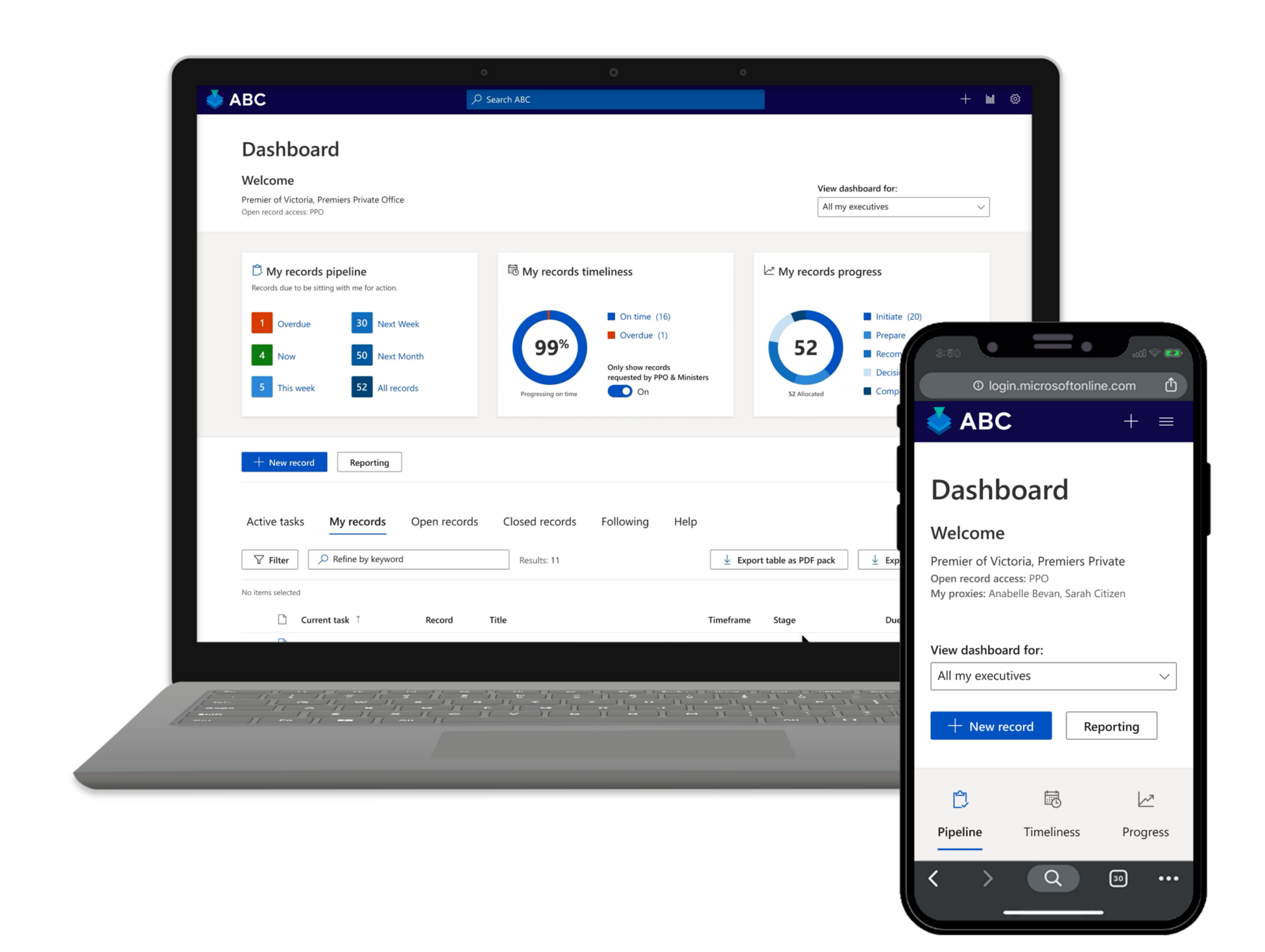
Published February 2024
In this blog we introduce you to seven ways that Microsoft 365 can be used to support digital transformation within public sector organisations.
There’s no doubt that Australia is a global leader when it comes to digital transformation in government. But with so much change and new advances in technology, it can be difficult to know where to start or how to make the most out of existing investments.
That’s why we want to highlight seven ways that Microsoft 365 can be used to support digital transformation within public sector organisations. Over the coming months, we’ll dive into each topic in more detail, and include real-life examples of how some of our clients (in both the public and private sector) are transforming the way they work using technology.
1. Efficient documentation, records compliance, and information security
If you’ve ever worked in government, you’ll likely have come across the debate of whether everything produced (from emails, to documents, and even meetings) is a record. You might have also experienced the frustration that comes with using siloed and clunky systems to collaborate on documents or store information as a record.
Most government departments have only scratched the surface of what’s possible with tools like SharePoint Online, Microsoft Purview, and the Power Platform. Together these tools can help with more efficient document collaboration, significantly improve compliance and information security, and even contribute to real cost savings (e.g. reduced IT spend, reduced printing etc.).
Read about how Transurban have used Microsoft 365 to improve information management.
2. Business process automation
Recent research from Gartner points to ‘hyperautomation’ – aka business process automation – as a key priority for government, with 60% of government organisations aiming for it by 2026. There are plenty of pain points that can be solved through automation and better integration. Pain points like repetitive data entry, time-consuming processes, complex or inaccessible information, and lack of clarity on important changes or decisions can lead to major inefficiencies in internal operations and decreased employee satisfaction.
Thankfully, there are plenty of ways these pain points can be alleviated using Microsoft 365. Better yet, low code features in the Power Platform have made it easier than ever for ‘citizen developers’ and IT teams to develop enterprise-grade approval workflows, automate data entry and processing, enhance vendor management, data migration and synchronisation (to name a few).

3. Data insights and reporting
There are plenty of tools that government departments can use to connect data sources and improve data-driven decision making. Power BI is a great example of how public sector organisations can enhance data insights and reporting. Power BI can help empower government organisations to transform data into actionable insights, improve decision-making, and enhance public services.
It can help with everything from public health insights (e.g. reviewing bed availability in hospitals), to financial management (e.g. to assist with reporting spend of tax dollars), to workforce management (to manage workloads and allocate tasks effectively), and even help with emergency response and crisis management.
Read about how Yarra Valley Water used the Power Platform to enhance their operations.
4. Incident response
If you’ve ever been part of an incident response, you’ll know managing incidents in a productive and coordinated way is never easy. Often there’s disjointed communication, double-handling and scrambling for information and resources, and lack of visibility on critical incident information across stakeholders. But these responses can be modernised and streamlined by using purpose-built applications built on-top of M365.
A perfect example of this is our Incident Management Teams app which has been designed to reduce repetitive/manual tasks, streamline the communication process, centralise documentation, and improve access to important details on the incident.
Read more about how this humble Teams app can help you improve incident management.
5. Collaboration and project management
Have you heard the saying “all the gear and no idea” or “organisations don’t change, people do”? Sometimes digital transformation isn’t about introducing new technology, but teaching people how to use the features they have available at their fingertips.
Often a shift to new ways of working can be complicated and met with a high level of resistance. In today’s digital age it’s no surprise why – change fatigue plagues most industries; including the public sector. This is where a solid change management program can help in building technical capability, reducing change fatigue and helping the change stick. With the right help, you can bring your employees on the digital transformation journey by finding use cases that clearly demonstrate the “what’s in it for me”.
6. Enhanced employee experience
The research is clear – more engaged employees lead to better outcomes. The Microsoft Viva suite has been designed specifically to elevate and enhance the way employees engage with their work and colleagues. The applications that make up the Viva suite have been built to address common challenges ranging from internal communication, to workplace analytics, skilling, goal alignment, and knowledge management. Microsoft Viva can be transformational for government departments that are prioritising employee experience as part of their talent attraction and retention strategies.
Head over to the case studies section of our website for plenty of examples of how our clients and enhancing employee experience with Microsoft Viva.
7. Innovation and future-readiness
In 2024, no digital transformation list would be complete without mention of Microsoft Copilot – the newest and most groundbreaking tool that is set to redefine how organisations in all industries work.
The Dept of Industry, Science and Resources says there are strong foundations for Australia to be a leader in responsible AI. Microsoft also views Australia as a leading and early adopter of new and emerging technology.
“Smart technologies are already being embedded in the workforce and our physical environments. With the right infrastructure and support, these technologies can make our industries more productive and our businesses more competitive.” – Department of Industry, Science, and Resources
For government organisations to innovate and create systems that are future-ready, it’s important to consider how generative AI fits into that story. While our journey with AI is still relatively in its infancy, the use cases within government are already endless – from assisting with policy research and analysis, to understanding patterns, risks and opportunities, freeing up employees to focus on complex tasks, and summarizing lengthy meeting notes or documents to make information more accessible. But before implementing AI, it’s important to understand the risks and regulatory obligations you must meet.
Check out our Copilot page for more information or get in touch to book a free AI briefing for your organisation.
Like what you see? Sign up to our BRAND NEW government newsletter.
If you enjoyed this blog, then make sure you sign up to our BRAND NEW industry newsletter, tailored especially for those working in government.
Our government newsletter will be sent quarterly and will be your one-stop-shop to keep you across technology in the government space. You can expect to learn about industry updates, how other departments are transforming their digital landscape, the solutions Engage Squared is building to improve outdated ways of working, and hear of any upcoming government related events we think you will find interesting.
Sign up to our government newsletterPlease note: Using the dropdown, please select ‘government’ and you’ll be added to the mailing list for our quarterly newsletter. If you are also interested to receive Engage Squared’s monthly newsletter that covers a range of industry updates, client success stories, blogs, events and much more, please select ‘Australia’. Sign up to one or both – we don’t mind. You can unsubscribe any time.
About the author
Claudia Piscitelli is the CXO of Engage Squared. For more than 12 years, she has worked in communications and change management, drawing on her qualifications in behavioural science to support large-scale change programs with some of the biggest enterprise companies in Australia. She is a certified Workplace Analytics Practitioner and mum of two.


